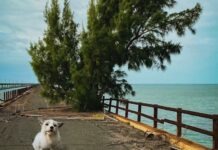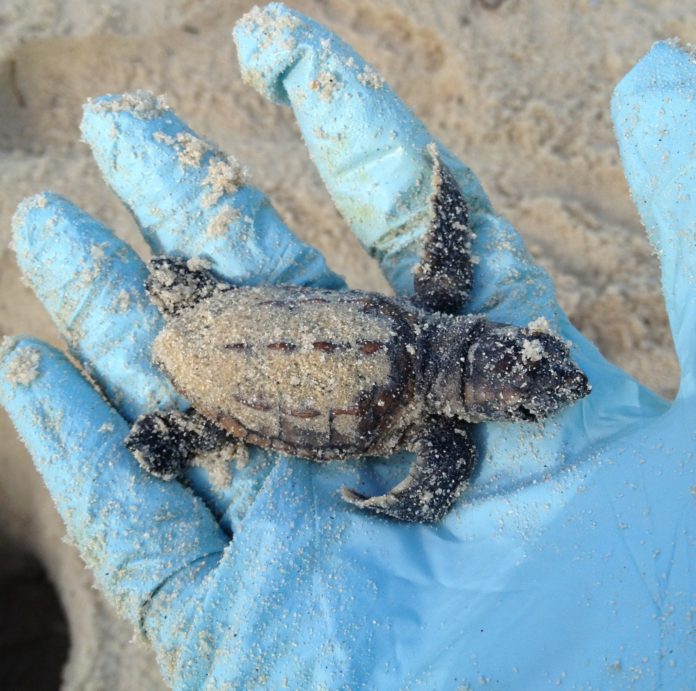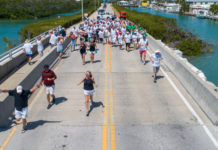Ralph Capone and his wife Denise comb the beaches of Key West beginning at 6 a.m., searching for turtle tracks that resemble snowmobile treads to find where a mama turtle laid eggs. When they find what appears to be a nest, they carefully sift through the sand to find tiny eggs that look like ping pong balls.
“The minute we find an egg, the nest is flagged and we put up a sign that reads, ‘One year in prison or $100,000 fine for tampering with turtles eggs,’” said Ralph, who is the nesting beach survey coordinator for Save-A-Turtle. “I plot the GPS coordinates of every nest and share that information with the city’s beach cleanup service. They do an excellent job of helping to protect the turtle nests.”
Ralph said it was a healthy season for the turtles this year, which began April 15 and ends Oct. 31. This year he and his team found seven nests on the shores of Key West and five on Sunset Key, primarily loggerhead and green sea turtles. Of the 100 or so eggs hatched from each nest, only half will survive.
“We also check the nests three days after they hatch,” said Denise. “One time, Ralph found six live loggerheads buried under 18 inches of sand.”
When members of Save-A-Turtle search the beach at night they use infrared lights so as not to confuse the hatchlings on their first journey to the ocean. Turtles look for the moon’s reflection on the water to guide them to safety but can be fatally distracted by a misplaced street lamp or outdoor lighting. According to Ralph, the various Keys municipalities and businesses do a good job of dimming lights by the beach.
He is so involved with the organization people around town call him Turtle Man. Ralph has even rescued a tortoise that was dropped off at Circle K during a bachelor party.
“I got the call,” said Ralph. “The only thing that came to mind was the tortoises at Ibis Bay and, sure enough, one was missing. We were able to track down the people who took it and they were apprehended.”
Save-A-Turtle is always looking for hands-on volunteers. For more information, call 305-517-6164 or visit save-a-turtle.org. Volunteers only need to take one two-hour class to be eligible for two years. Members record data about the turtles as well and submit it to Fish and Wildlife Conservation Commission for research purposes.
Facts about green turtles
Type: Reptile
Diet: Herbivore
Average life span in the wild: More than 80 years
Size: Up to 5 ft. (1.5 m)
Weight: Up to 700 lbs. (317.5 kg)
Group name: Bale
Protection status: Endangered
Did you know? Like other sea turtles, the green turtle cannot pull its head into its shell.
Facts about loggerhead turtles
Type: Reptile
Diet: Carnivore
Average life span in the wild: More than 50 years
Size: 36 in (90 cm)
Weight: Up to 253 lbs. (115 kg)
Group name: Flotilla
Protection status: Endangered
Did you know? Sea turtles can move through the water at speeds of up to 15 mi (24 km) per hour.
— Nationalgeographic.com



























